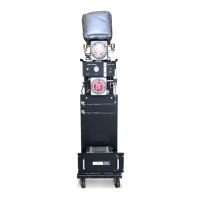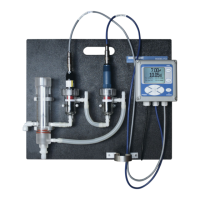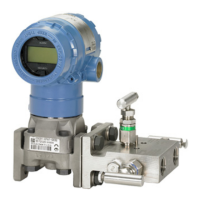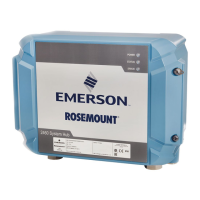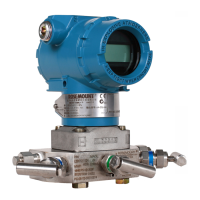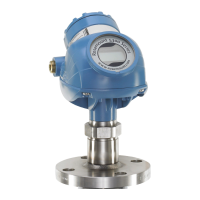176
Reference Manual
00809-0100-4021, Rev GC
Section 5: Maintenance
April 2014
Maintenance
5.2 Maintenance
The 3144P Transmitter has no moving parts and requires a minimum amount of scheduled
maintenance and features a modular design for easy maintenance. If a malfunction is suspected,
check for an external cause before performing the diagnostics discussed in this section.
5.2.1 Test terminal (HART / 4–20 mA only)
The test terminal, marked as TEST or (“T”) on the terminal block, and the negative (-) terminal
accept MINIGRABBER
™
, or alligator clips, facilitate in-process checks (see Figure 2-9 on
page 21). The test and the negative terminals are connected across a diode through the loop
signal current. The current measuring equipment shunts the diode when connected across the
test (T) and negative (-) terminals; so as long as the voltage across the terminals is kept below
the diode threshold voltage, no current passes through the diode. To ensure there is no leakage
current through the diode while making a test reading, or while an indicating meter is
connected, the resistance of the test connection or meter should not exceed 10 ohms. A
resistance value of 30 ohms will cause an error of approximately 1.0 percent of reading.
5.2.2 Sensor checkout
If the sensor is installed in a high-voltage environment and a fault condition or installation error
occurs, the sensor leads and transmitter terminals could carry lethal voltages. Use extreme
caution when making contact with the leads and terminals.
To determine whether the sensor is at fault, replace it with another sensor or connect a test
sensor locally at the transmitter to test remote sensor wiring. Transmitters with Option Code C7
(Trim to Special Sensor), are matched to a specific sensor. Select a standard, off-the-shelf sensor
for use with the transmitter, or consult the factory for a replacement special sensor/transmitter
combination.
5.2.3 Electronics housing
The transmitter is designed with a dual-compartment housing. One compartment contains the
electronics module, and the other contains all wiring terminals and communication receptacles.
Removing the electronics module
Note
The electronics are sealed in a moisture-resistant plastic enclosure referred to as the electronics
module. This module is a non-repairable unit and the entire unit must be replaced if a
malfunction occurs.
The 3144P electronics module is located in the compartment opposite the wiring terminals.
Use the following procedure to remove the electronics module:
1. Disconnect the power to the transmitter.
2. Remove the cover from the electronics side of the transmitter housing (see
“Transmitter Exploded View” on page 203). Do not remove the covers in explosive
atmospheres with a live circuit. Remove the LCD display, if applicable.
3. Loosen the two screws anchoring the electronics module assembly to the transmitter
housing.
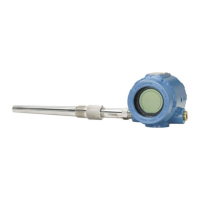
